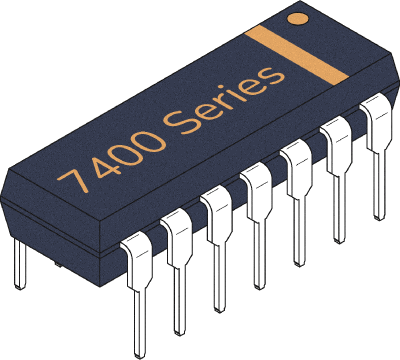The 74×157 (ex 74LS157) is a chip that features four 2-to-1 data multiplexers. This device can be used to route one of two 4-bit data sources to a single 4-bit output bus, controlled by a common select input and featuring individual enable inputs for each multiplexer.
In this guide, you’ll learn the things you need to know about this chip in order to effectively use data multiplexing in your own projects.
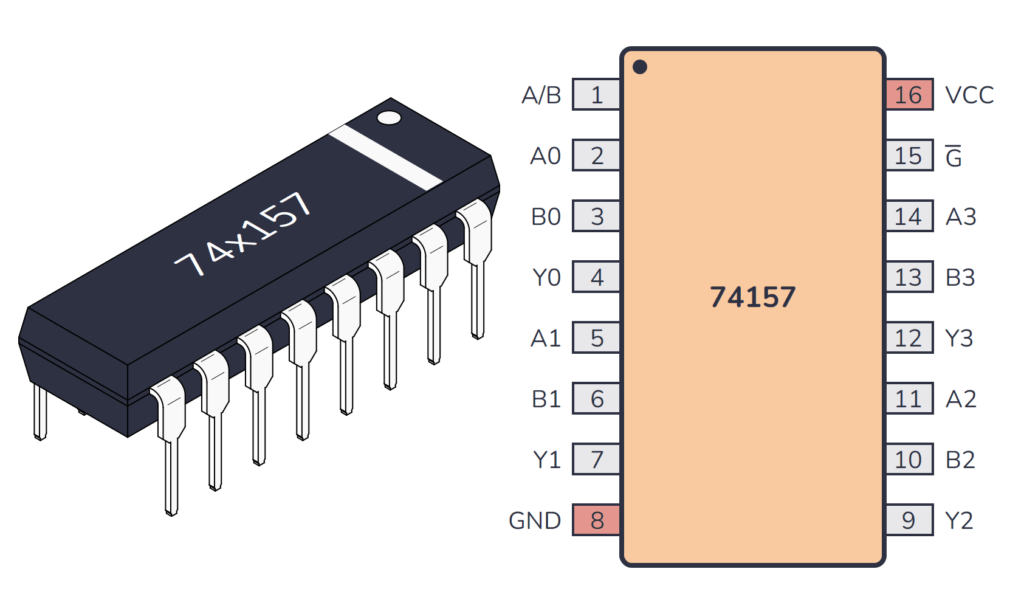
What does the 74HC157 / 74LS157 do?
The 74×157 is chip with four 2-to-1 line data selectors/multiplexers. It takes two 4-bit words as inputs and lets you choose which you want to send to the output using select lines.
Here’s how it works:
- A 4-bit word is selected from one of two sources (A or B) ans routed to the 4 Y outputs.
- Use the input (A/B) to decide which input is connected to the output.
- There’s also an enable input called Strobe (G). When it’s active, the selected input is sent to the output; when it’s not, the output stays in a disabled state.
Multiplexers like the 74×157 are handy for directing data from multiple sources to a single destination, especially useful in digital circuits where you need to manage data from various paths.
How To Use This Chip
The 74HC157 comes in a 16-pin package, and you need to connect it to power before you can use it. Most 7400 ICs support a VCC voltage of 5V. One difference between the HC and LS version of the chip is that the 74HC157 supports 2V to 6V, while the 74LS157 only supports 5V.
74HC chips can normally supply a maximum of 4 mA from an output pin. If you’re using the 74LS version, the maximum current you can pull out of one output pin is 0.8 mA when the pin is high (sourcing) or 16 mA when the pin is low (sinking).
But these values can differ between models, so check the datasheet of your model to verify.
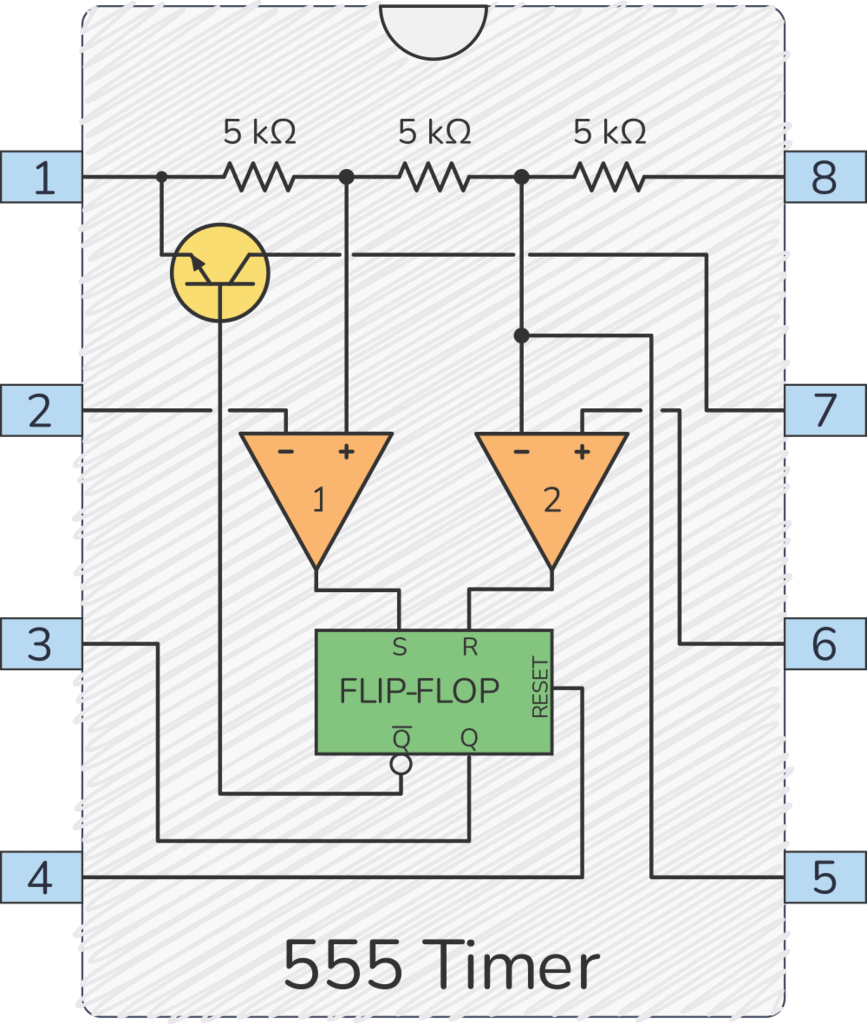
Get the 555 Timer Cheatsheet
A super helpful reference that makes it easy to design circuits, so that you can build oscillators, timer circuits, and more in no time.
Once you’ve connected it to power, you can use the Multiplexers inside.
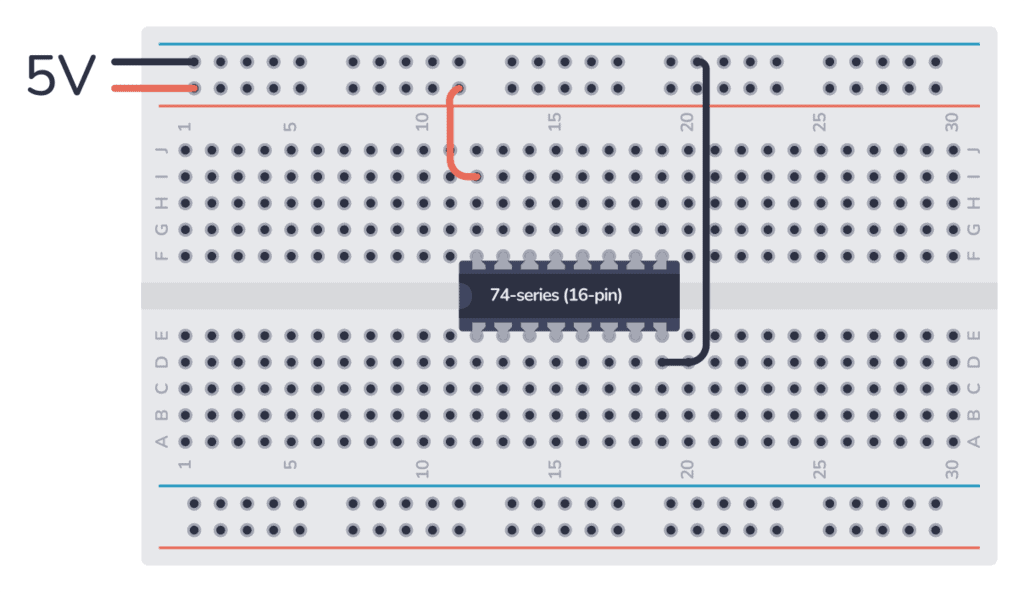
74×157 Pinout
The 74×157 has 16 pins and contains four 2-to-1 line data selector/multiplexer with complementary outputs laid out as shown in the pinout diagram below:
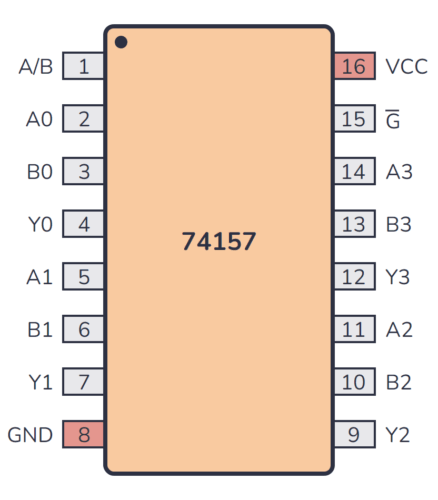
| Pin Name | Pin # | Type | Description |
|---|---|---|---|
| A/B | 1 | Input | Select input for the multiplexer, selects between source A and B. |
| A0 | 2 | Input | Bit 0 for input source A |
| B0 | 3 | Input | Bit 0 for input source B |
| Y0 | 4 | Output | Multiplexer output bit 0 |
| A1 | 5 | Input | Bit 1 for input source A |
| B1 | 6 | Input | Bit 1 for input source B |
| Y1 | 7 | Output | Multiplexer output bit 1 |
| GND | 8 | Power | Connect to ground (GND). |
| Y2 | 9 | Output | Multiplexer output bit 2 |
| B2 | 10 | Input | Bit 2 for input source B |
| A2 | 11 | Input | Bit 2 for input source A |
| Y3 | 12 | Output | Multiplexer output bit 3 |
| B3 | 13 | Input | Bit 3 for input source B |
| A3 | 14 | Input | Bit 3 for input source A |
| G | 15 | Input | Output enable input (active low), enables the outputs. |
| VCC | 16 | Power | Positive power supply. Connect to +5V power. |
Alternatives and Equivalents for 74HC157 / 74LS157
There are many versions of the 74×157 chip. They all have the same functionality, but with different specifications such as supported voltages and maximum current output.
Here’s a list of a few equivalents of this chip:
- 74HC157 (High-speed CMOS)
- 74HCT157 (High-speed CMOS, TTL compatible)
- 74LS157 (High-speed TTL)
- 74LVC157 (Low Voltage TTL)
- 74AC157 (Advanced CMOS)
- 74ALS157 (Advanced Low-Power Schottky TTL)
- 74F157 (Very High Speed)
- 74C157 (CMOS, similar to the 4000-series)
Some manufacturers also add a prefix, such as the SN74HC157 and SN74LS157 by Texas Instruments.
Can’t find the 74×157 anywhere? Then try one of the following IC alternatives:
- 74×158 – Quad 2-to-1 multiplexer with inverted outputs.
- 74×257 – Quad 2-to-1 multiplexer with tri-state outputs.
- 74×258 – Quad 2-to-1 multiplexer with inverted tri-state outputs.
- 74×153 – Dual 4-to-1 multiplexer.
- CD4052 – Dual 4-channel analog multiplexer/demultiplexer.
- CD4053 – Triple 2-channel analog multiplexer/demultiplexer.
If you can’t find the 74×157 IC in your local electronics store, don’t worry, you’ll most likely find it in one of the stores listed on this page of online stores where you’ll find components and tools for all your electronics projects.
Datasheet for the 74LS157 and 74HC157 chips
Download the PDF datasheet for your version of the 74×157 here:

10 Simple Steps to Learn Electronics
Electronics is easy when you know what to focus on and what to ignore. Learn what "the basics" really is and how to learn it fast.

